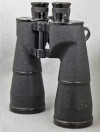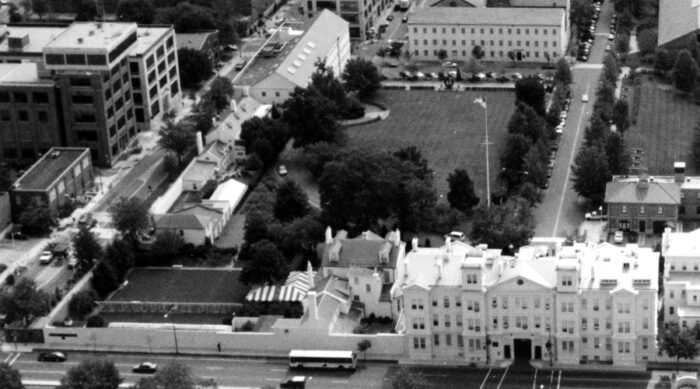
When the United States declared war on Germany in 1917, they found themselves with a number of problems in sourcing various goods. This included high-quality binoculars, the best of which were made in Germany. Since good optics are a must for the military, a new source had to be found.
This was accomplished partly by nationalizing certain factories, a fact that would not fulfill all the demand. Instead, a new optical shop was approved to be built at the Washington Navy Yard.
The building made for this purpose remains today, and it is one of the more distinctive structures at the Navy Yard, as it is a bit taller than those around it – for the simple reason that it provided a good view from there all across Washington, and even across the Potomac River.
What this meant specifically was that there was a clear view of the Washington Monument 2.4 miles away, and the George Washington Masonic Temple in Alexandria, which is a bit over 6 miles as the crow flies. And therefore, rangefinders ––necessary to allow naval ships to determine the distance to fire their weapons–– could be calibrated, since the exact distances to these landmarks were known.
These devices were also made in the building, known as the Range Finding Tower and Optical Shop, or Building 157. When it opened, it was the only place in the country that could calibrate rangefinders.

Unfortunately, the building was not completed until after the war was over; in the interim, factories in Rochester of the Crown Optical were simply renamed the US Naval Optical Shop Annex, and binoculars made there were given this new designation.
After the tower’s completion, all equipment from the annex was moved from Rochester and continued to be used. This became crucial after the United States’ entry into the Second World War. They continued to churn out equipment now vital to this new war. One of the things made there were binoculars. In this case, however, they did not build them entirely from scratch, but instead took binoculars that were made by the Bausch & Lomb company of Rochester, and enhanced them. The originals were 7 x 50 (which meant that they had 7x magnification and a 50mm lens at the front) By adding two barrels to the end, and slightly changing the optics, the converted them into 9 x 63 binoculars. These were particularly sought after on ships, and played a useful part throughout the war.
One of these binoculars actually became famous in its own right some 20 years after the end of the war. During the filming of the James Bond film Goldfinger, one of the villain’s assistants uses a pair of binoculars to spy on a card player playing against Goldfinger. An assistant art director happened to own a 9 x 63 binocular, and lent it to the production. It can be seen when Bond breaks into Goldfinger’s room and discovers the assistant reading the cards off into a radio transmitting into Goldfinger’s ear.
That particular item sold for some 7,000 dollars in 2015. If you want one that was not used in a famous film, it will run you a much more affordable 1,000 dollars.
